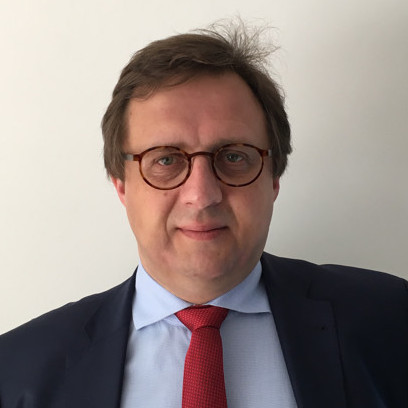SMR’s Trilemma Towards The Future

Luc Van Den Durpel
Nuclear energy is a key component of any world energy system future seeking to uncouple our societal and economic development from any further unsustainable impact on our environment. The past two decades have brought various approaches to the energy transition towards more sustainability, though, the challenges ahead of us are so tremendous that any approach without an integrated systems view is doomed to be low efficient or even not effective at all. The increasing system costs of less efficient energy transition approaches, largely based on policies based on ‘too-fast-too-much’ prioritising renewable energy sources, often intermittent (i.e. with low effective efficiency), make it all the more challenging to become effective.
Nuclear energy has the potential to be the backbone component in any effective sustainable energy system that also seeks to be efficient in resources (until the self-sufficiency through the fast spectra) to be deployed during the transition as well as in such future energy systems. This also demands that nuclear energy offers the solutions for a larger set of energy challenges (until self-sufficiency through the fast spectra) beyond the historic role in electricity generation.
The large (≥ 1 GWe unit size) nuclear reactors are already a major offer to such backbone role and will continue doing so benefiting from a large experience and economies-of-scale effects. Though, the soaring electricity demand within such sustainable energy futures and especially the demand for energy generation required to decarbonise many of the industrial processes and the creation of energy vectors (among which the production of hydrogen), demands new offers from the nuclear industry. Better market-sized reactors providing a variety of energy generation options intimately compatible with, among others, energy-intensive industrial and societal needs are increasingly essential to become effective in achieving sustainability.
Small Modular Reactors (SMRs), but also micro- and mini-versions in terms of delivered power, and more advanced designs (Advanced Modular Reactors)[i] are complementing the large nuclear reactors in such sustainable energy systems. Three key challenges are making a trilemma for such SMRs which need resolve before the end of this decade ensuring truly contributing to such systems, i.e.:
- Focus on delivering by ensuring their bankability:
- Various technology-to-business approaches are being presented by SMR vendors seeking to position themselves in different energy markets. Most seek bankable deployment via economies of mass production with others more focusing on niche captive market segments.
- But the bankability remains to be demonstrated and doing so by the end of this decade is essential where regulation harmonisation, finalised designs of reactors, and mature industrial best-practice-based project management and a performing supply chain are key elements towards de-risking the path towards such bankability;
- Today’s nuclear is already an extremely safe and reliable source of energy; future nuclear can become even better.
- Among the stakeholders, public opinion plays and will play an essential role in the development and deployment of nuclear energy. A robust demonstration of the fact that the potential concerns (safety, security, safeguards, waste management) are correctly managed is essential to overcome any reluctance.
- In strict connection with the previous challenge, we need to ensure that all our stakeholders remain connected in our path towards those future sustainable energy systems with a nuclear backbone. There are many objectives we aim for (economics, non-proliferation, safety, security and waste management), but the achievement of all will be largely facilitated via an intra-nuclear system thinking where each of the nuclear reactor technologies is optimised for their market function, and not necessarily seeking to be the “miracle solution”.
- Be realistic in the timelines towards delivery while seeking to present to our stakeholders that we can fulfil all objectives and that intra-nuclear synergies between different reactor technologies and harmonization of the regulatory frameworks across the globe will allow for accelerating the deployment of commonly agreed technologies.
- Don’t forget the fuel cycle
- Many of the intra-nuclear synergies facilitating the achievement of all sustainability objectives for nuclear energy are realised via the nuclear fuel cycle. Many of the SMRs are HALEU-based which is already a challenge but, when realised, also offer new fuel cycle options and even the fuel to other SMR/AMRs but will also demand the appropriate investments.
- The fuel cycle for worldwide deployment of SMRs will also bring challenges relating to security and safeguarding and need to be addressed from the early phase of SMR development and deployment.
- Lastly, only through such intra-nuclear systems view, we may further minimise the waste arising from all reactor technologies and minimize the need for geological disposal.
Anyhow, we have the knowledge and skills to face this trilemma and to address it effectively and timely. Let’s do so.
Luc Van Den Durpel (Nuclear-21)
[i] We shall only use ‘SMR’ here while covering the various options from micro-SMR towards AMRs.
Luc Van Den Durpel
International expert on sustainable energy technology management, specifically nuclear energy, Luc Van Den Durpel has more than 25 years of experience as researcher and manager ranging from nuclear science & technology, R&D-infrastructure design and strategy development, nuclear engineering, and specifically advanced nuclear energy systems matching various energy markets to energy policy and technical-economic assessments of energy systems. In 2015, he launched the internationally operating consulting firm Nuclear-21 (ENS Corporate Member) supporting governments, utilities, industry, waste agencies and R&D-laboratories in nuclear technology-to-business decisionmaking.
